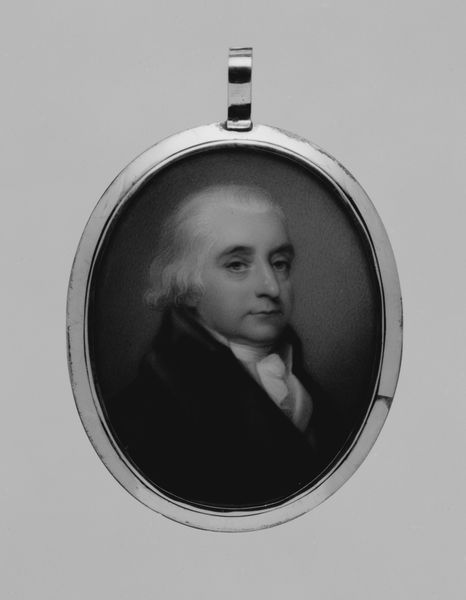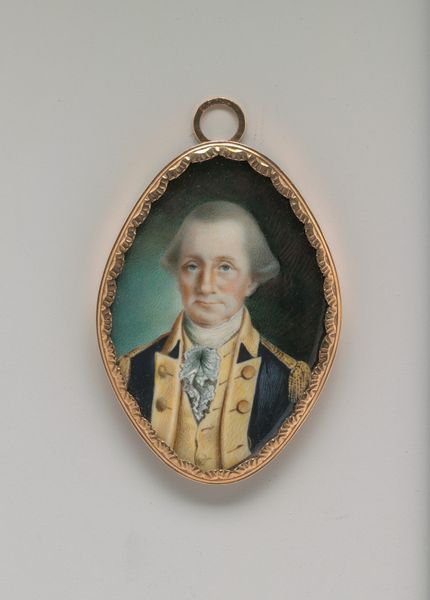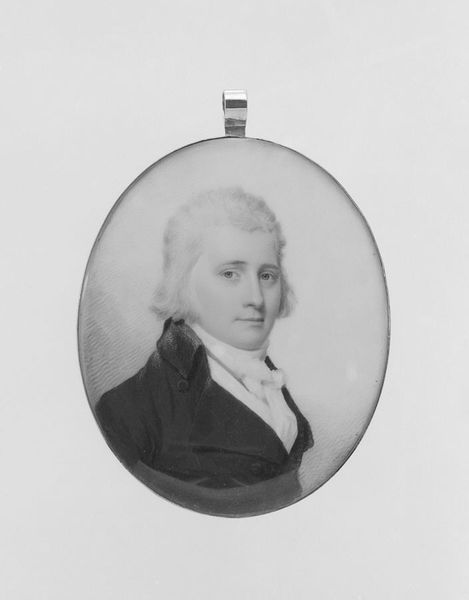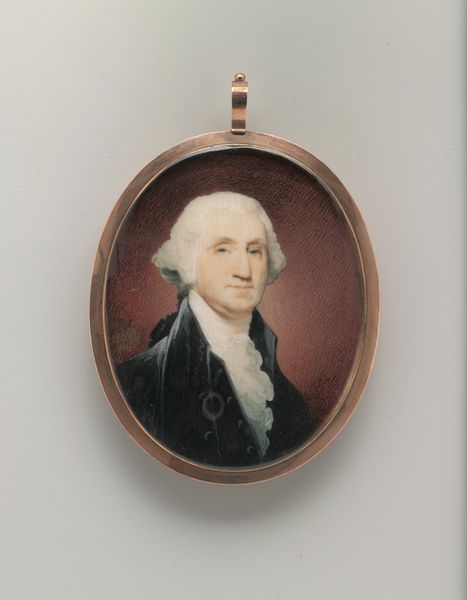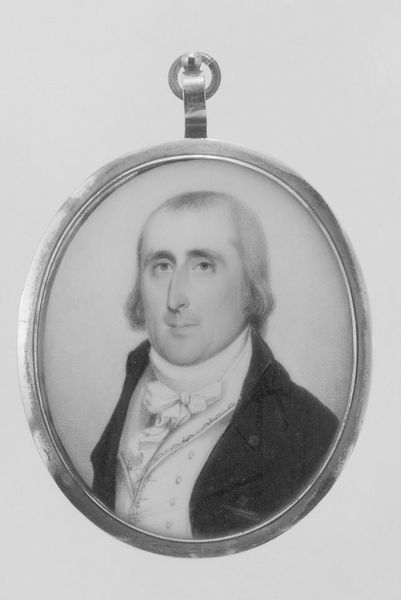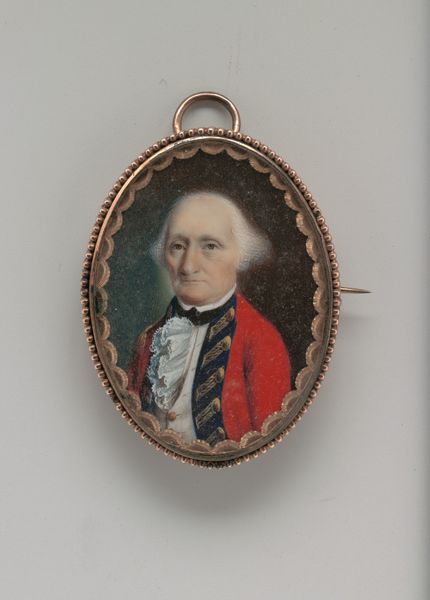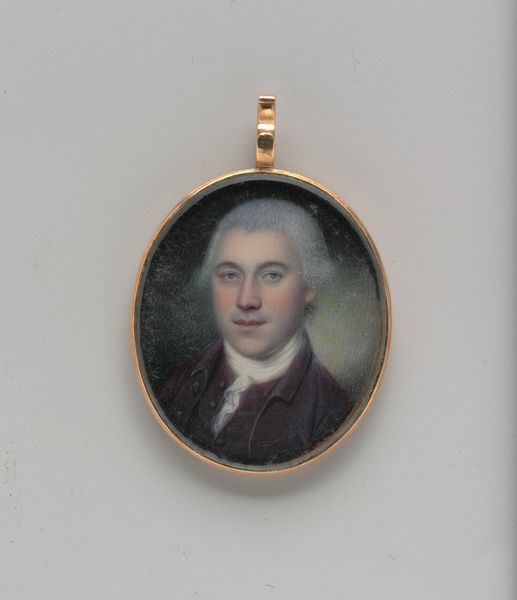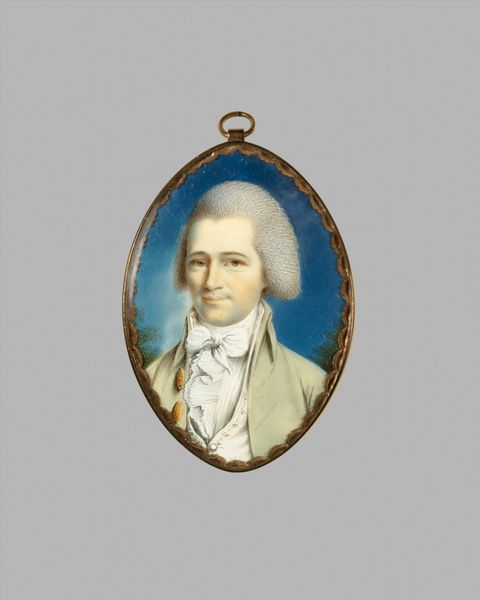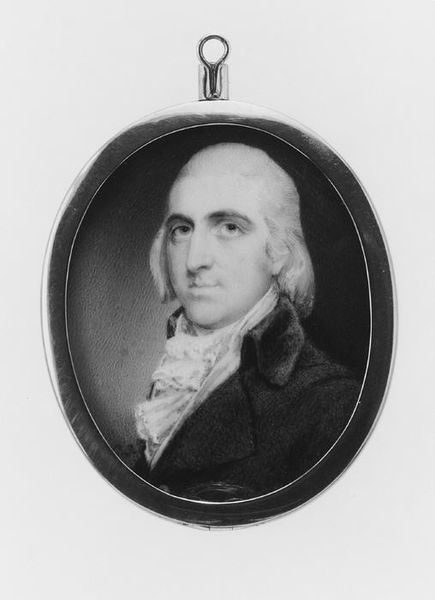
drawing, pencil
#
portrait
#
drawing
#
neoclacissism
#
pencil
#
miniature
Dimensions: 1 7/8 x 1 1/2 in. (4.8 x 3.8 cm)
Copyright: Public Domain
Curator: This is James Peale's "Portrait of a Gentleman," a miniature drawing created around 1791. It's currently held at the Metropolitan Museum of Art. Editor: It feels like a secret, doesn't it? The muted tones, the size…like a private message passed down through generations. Curator: Miniature portraits like this were often commissioned as keepsakes, expressions of affection or status, intended for intimate viewing. The gentleman's clothing reflects his social standing, and the details showcase Peale's skill in capturing likeness. I find myself focusing on the case and clasp more than the portrait. Consider how labor intensive these elements must have been to manufacture in the 1790s! Editor: I'm immediately drawn to the lace at his throat – such delicate rendering. It feels almost… rebellious. A touch of extravagance in a time of powdered wigs and societal constraint. Do you think the artist meant to highlight that element of personal expression, or were they more concerned with documenting his clothes and station? Curator: It's a complex dance, isn't it? Balancing representation with perhaps an idealized version of the sitter. Peale himself came from a family of artists and craftsmen. He certainly understood the socioeconomic context surrounding this type of commission and the materials he had at his disposal to create it. He used pencil, likely in conjunction with watercolor. What sort of impression would a pencil have made upon a viewer in 1791, already? Editor: I can almost feel the scratch of the pencil on the page. A little too easy maybe, considering how luxurious its owner appears. Still, there’s something very appealing in that…the immediacy of the medium combined with the formality of the subject. As though capturing a moment. Curator: It’s an artifact brimming with clues if you look at it as such: the sitter, the artist, the cultural values and manufacturing capacities all swirling together into one portable commodity object. Editor: Yes! That's very true, perhaps it does whisper volumes about what really mattered in that age. I suppose, in many ways, miniatures continue to do exactly that in our own time through other, updated technologies. Curator: Precisely. Thank you for helping unlock new perspective. Editor: My pleasure entirely. This was insightful.
Comments
No comments
Be the first to comment and join the conversation on the ultimate creative platform.
